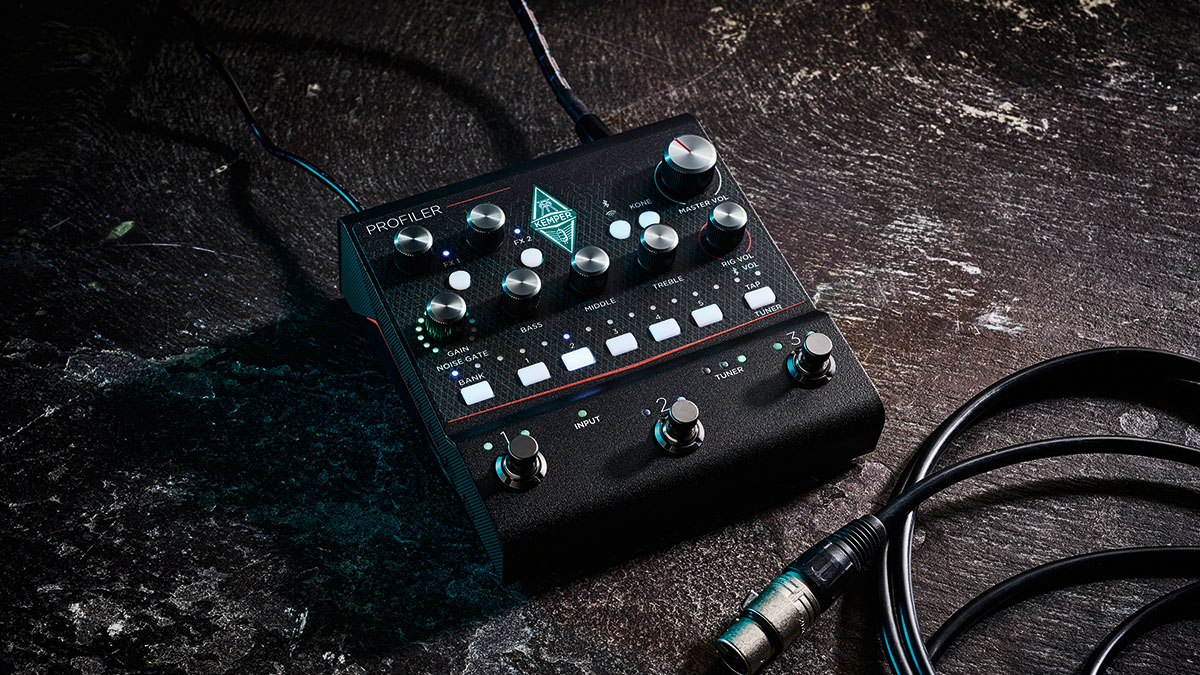Guitar World Verdict
Aimed at dedicated amateurs and professionals, while perhaps best-suited to existing Kemper users, we think it’s good value for money and well worth a look.
Pros
- +
Impressive, authentic real amp tones.
- +
Tones cover a wide range of musical genres.
- +
High-quality effects.
- +
Wide dynamic range.
- +
Super-low noise performance.
- +
Rugged build quality.
Cons
- -
Initially bewildering controls for non-Kemper users.
- -
No graphical text display.
- -
No integral effects loop.
- -
Multi-coloured LEDs may be an issue for colour-blind players.
- -
Unusually high current power specs reduce third party power supply choice.
You can trust Guitar World
It’s fair to say that the arrival of the Kemper Profiler amplifier in 2011 was a disruptive event in the digital amp modeling niche market. Up until that point, we’d been happy to take the software and hardware we’d been given by manufacturers and use it with varying degrees of success.
Christoph Kemper’s radical approach was to use his proprietary software to extract the DNA of any amplifier’s sound and save it as a unique model (the Profile) that could then be tweaked with EQ, effects and so on.
From the start, the Kemper polarised opinions – there were players who got it and others who didn’t – but over time the all-important software has been vastly developed and improved.
Consequently, Kemper has kept up with the competition and continues to be relevant, with new concepts such as Liquid Profiles and seriously powerful new products including the Profiler Stage floorboard and Kabinet. We’ve also seen Kemper’s Rig Manager software extended to mobile devices running Android and iOS.

Now there’s another hardware addition that’s going to be of particular interest to pedalboard users, the Profiler Player. As the name suggests, this is a compact Kemper that focuses on playing your favourite selections from the many thousands of Kemper Rigs out there, within the limitations of its four effect slots.
The rugged, stage-ready construction has a similar look to the Profiler Stage but with a graphite-painted steel case and green/grey overlays. The folded construction is complex yet perfectly executed, with a neat perforated panel on the underside for ventilation purposes.
On the top panel are rotary controls with integrated push-button switches for FX, Master Volume, Gain, Bass, Middle and Treble, and Rig Volume level. Illuminated button switches select and edit various features including the Player’s Bluetooth and Wi-Fi functions, with three assignable heavy duty footswitches.
All the latest guitar news, interviews, lessons, reviews, deals and more, direct to your inbox!
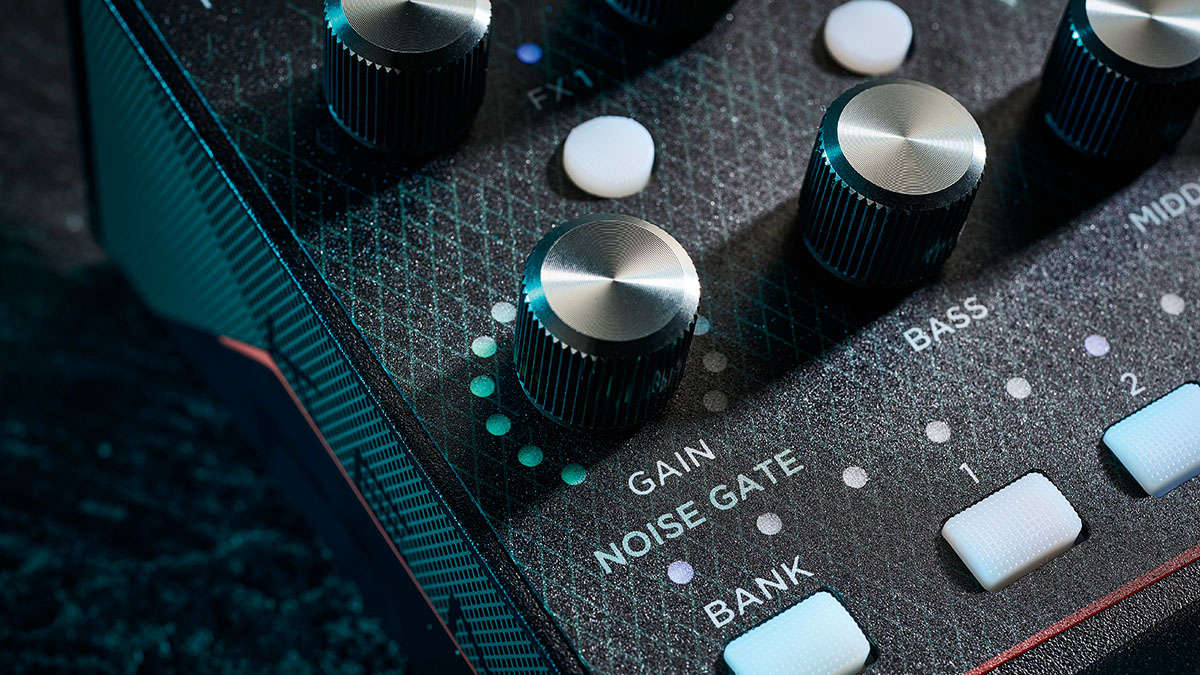
You’ll find the essential connectivity on the unit’s rear panel, including a single instrument input jack, a stereo pair of output jacks, an expression pedal jack and a headphones socket, together with a single balanced XLR.
There are two USB sockets: a Type A that’s used for firmware updates and backups, with a Type B for USB recording, MIDI and connection to a desktop Rig Manager.
Finally, on the far right of the rear panel is a socket for the external DC power supply and a slot for a Kensington lock. The Profiler Player looks the part and behind the attractive outer shell it’s reassuringly tough, ready for professional pedalboard life.
In use & sounds
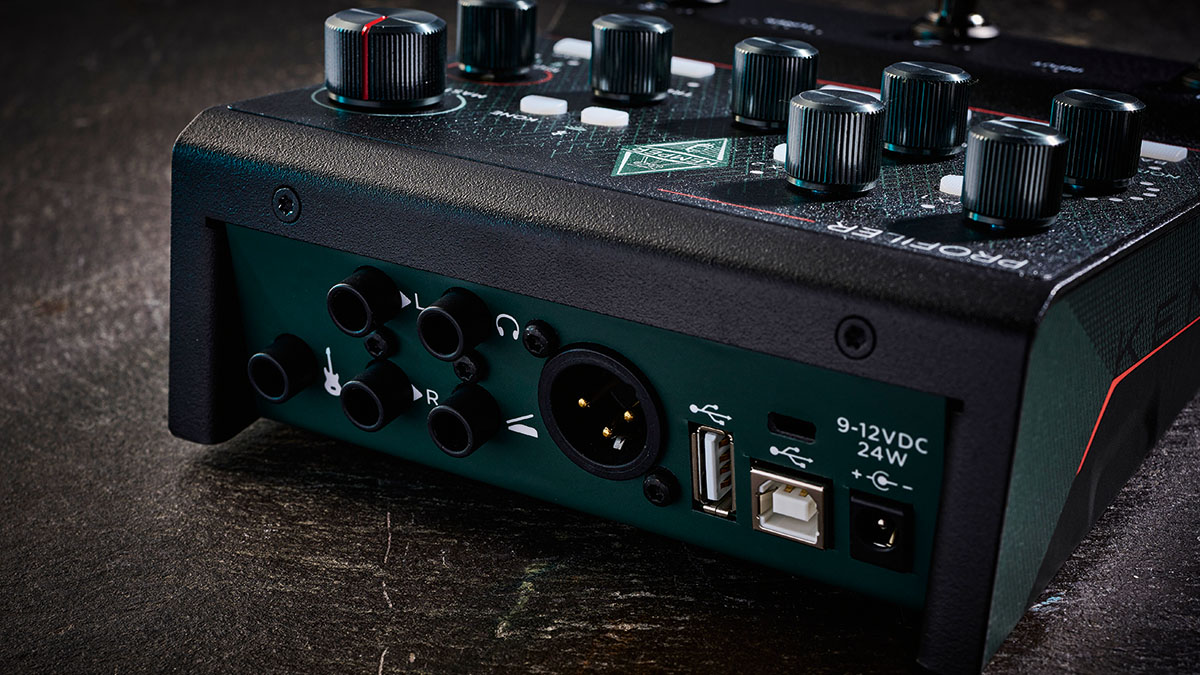
We tried out the Profiler Player with our regular Les Paul and Strat plugged into a budget PC guitar audio interface, using the USB and balanced XLR outputs. There’s about a 12-second wait for the Kemper to power up, with a visual indication from the bank and patch LEDs lighting up in white to form a progress ladder. Once the boot process is complete, the LEDs change to indicate the Kemper is in active mode and ready for use.
The pre-loaded Rig sounds are mostly very impressive, covering a wide range of American and British-influenced guitar amp tones. They sit well in live and recorded mixes, usually with little or no tweaking. The effects vary from very good to superb, with highlights including the rotary speaker emulator and some of the hall reverbs.
There’s no text display, so at first glance you’re reliant on knowing what the Profiler Player’s various multi-coloured LEDs are telling you. For detailed information, you need to connect the Profiler Player to Kemper’s Rig Manager app, either via USB or by using the Player’s built-in Wi-Fi interface.
Connecting a smartphone is quick and easy, providing instant control and feedback, although the smaller screen means a fair amount of swiping and tapping. It’s much easier on a large desktop display.
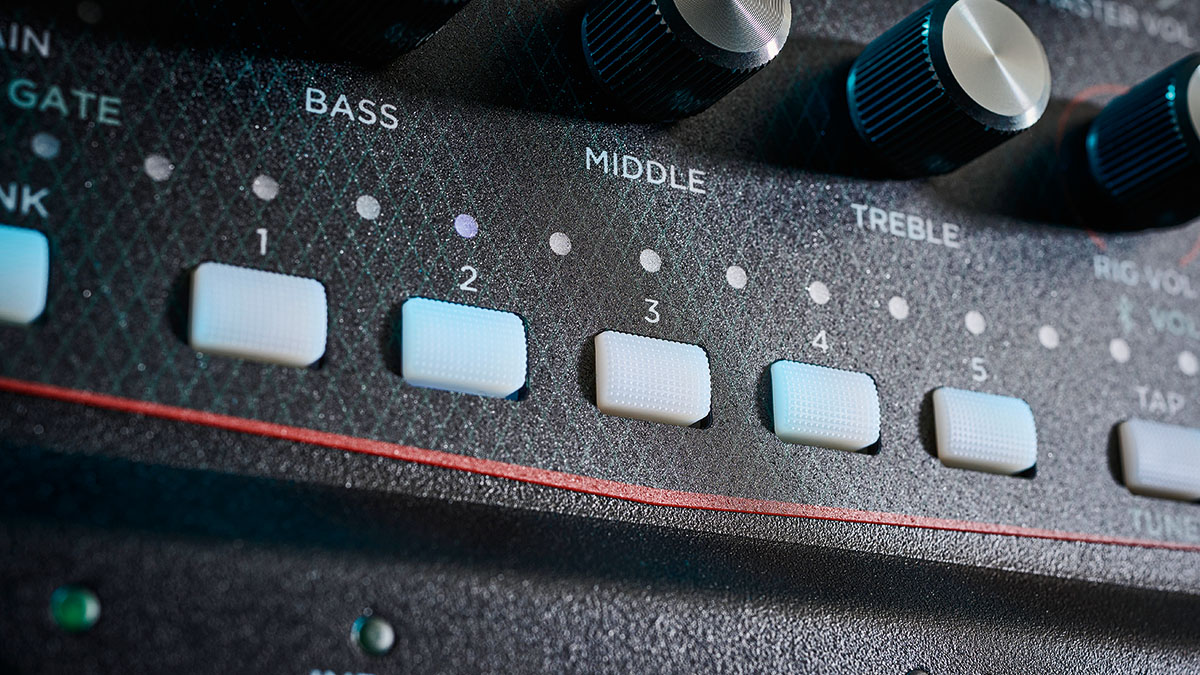
By now, it should be clear that a thorough read of the 165-page manual is not an option; to be fair to Kemper, as you become used to its way of doing things, the workflows are logical and get easier with practice.
The Profiler Player can store 50 Rigs in 10 banks of five, with multi-coloured LEDs changing from red, green, violet, blue and yellow, to let you know which bank you’re in. The three footswitches can be set to work in a number of different ways. However, the default mode is the most useful, with the outer two buttons stepping up and down through Rigs and banks, while the centre button toggles the effects on and off.
Most of the rotary controls have extra functions available from pressing them; for example, push-dialling the Gain control operates the input noise gate. The Profile Player’s noise gate is excellent, making it easy to squash the extra hum when using single coils in a high-gain patch, and it takes external pedals quite well, though there’s no built-in loop.
Verdict
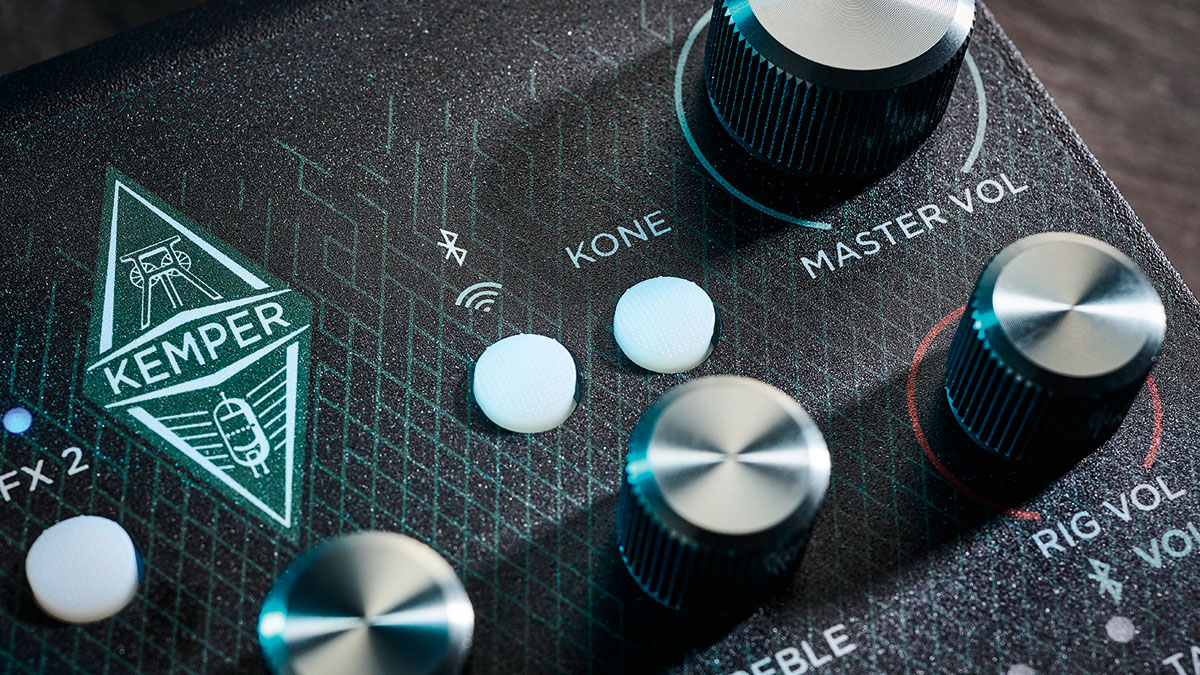
As increasing numbers of people are now saying, digital technology has finally come of age where guitar amplification is concerned. The professionally recorded Profiles loaded in Kemper’s Profiler Player are highly authentic and augmented with quality effects.
Out of the box, there’s something to suit any genre, from acoustic folk to jazz, country to classic rock, and every sub‑faction of metal you can think of. If you still can’t find anything that works for you, then you can always browse the thousands of Kemper Rigs available online, within the Profile Player’s limitation of four effects modules, two before and two after the amp Rig.
In a studio, with Rig Manager hooked up on a widescreen display, it’s a powerful tool and great fun to use
The Profiler Player’s compact dimensions mean it will fit on most pedalboards, but pay attention to the power supply, which has to provide a hefty 2.5 amps at start-up, considerably reducing your third-party power supply choice. The Player’s lack of display and reliance on multi-coloured LEDs also mean it’s perhaps not quite as accessible for live use.
However, in a studio, with Rig Manager hooked up on a widescreen display, it’s a powerful tool and great fun to use. Aimed at dedicated amateurs and professionals, while perhaps best-suited to existing Kemper users, we think it’s good value for money and well worth a look.
Specs
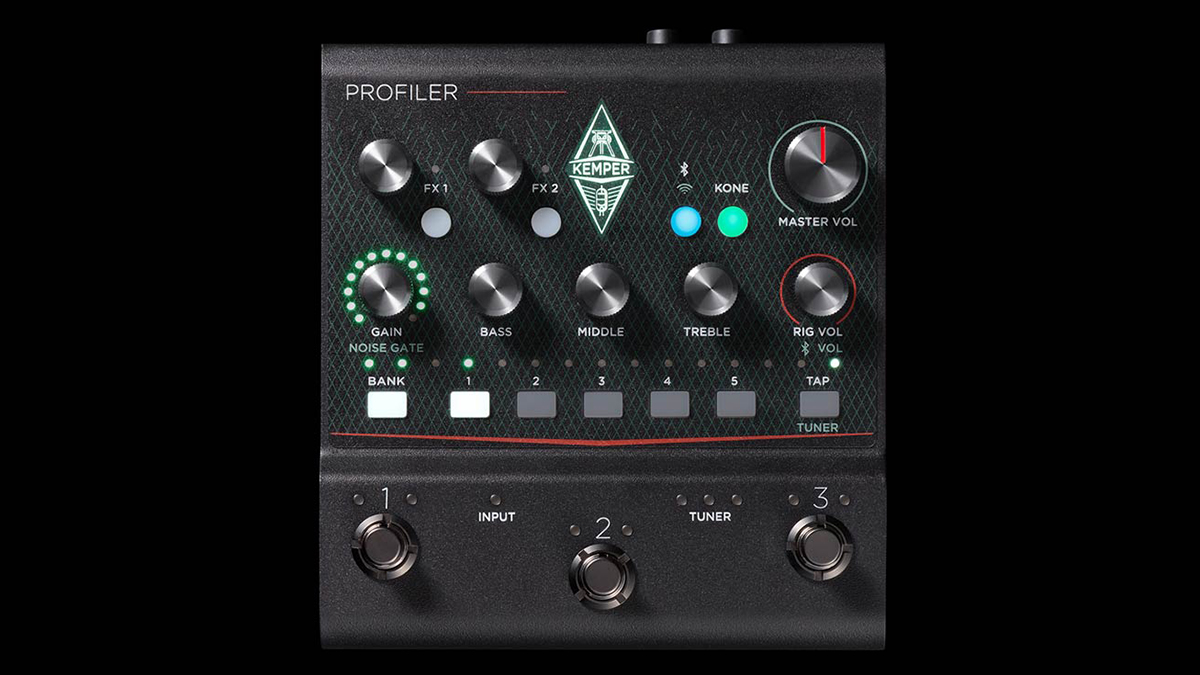
- PRICE: $698 / £619 (in-store; also available direct from Kemper)
- ORIGIN: Germany
- TYPE: Digital modelling preamp
- DIMENSIONS: 145 (w) x 166 (d) x 68mm (h)
- WEIGHT (kg/lb): 1.1/2.4
- CABINET: Steel
- CONNECTIONS: Single instrument input, stereo unbalanced output jack, stereo headphones jack, expression pedal jack, mono balanced XLR. USB-A socket for firmware backups and updates, USB-B socket for Rig Manager desktop connection, MIDI and recording
- CHANNELS: 50 Kemper Rigs, organised in 10 banks of 5, 136 onboard effects
- CONTROLS: Gain, bass, middle, treble, rig volume, master volume, FX1 level, FX2 level. 6x bank select and store buttons, tap/tuner button, FX1 and FX2 select/edit buttons, Bluetooth Wi-Fi control button, Kemper Kone select button
- FOOTSWITCH: 3x integral custom-assignable footswitches
- ADDITIONAL FEATURES: Bluetooth audio streaming, Wi-Fi or USB connection to Kemper Rig Manager, USB audio recording, integral tuner. Kensington security lock slot
- POWER: 9-12V DC from external adaptor (supplied). NB: Initial start-up current draw needs a minimum 2,500mA supply
- OPTIONS: Kemper-optimised Mission EP1-KP expression pedal is £138; powered Kemper Kabinet is £489
- RANGE OPTIONS: The full-sized, fully featured Kemper Profiler Stage floorboard is $1,599 / £1,098
- CONTACT: Kemper Amps
Nick Guppy was Guitarist magazine's amp guru for over 20 years. He built his first valve amplifier at the age of 12 and bought, sold and restored many more, with a particular interest in Vox, Selmer, Orange and tweed-era Fenders, alongside Riveras and Mark Series Boogies. When wielding a guitar instead of soldering iron, he enjoyed a diverse musical career playing all over the UK, including occasional stints with theatre groups, orchestras and big bands as well as power trios and tributes. He passed away suddenly in April 2024, leaving a legacy of amplifier wisdom behind him.
